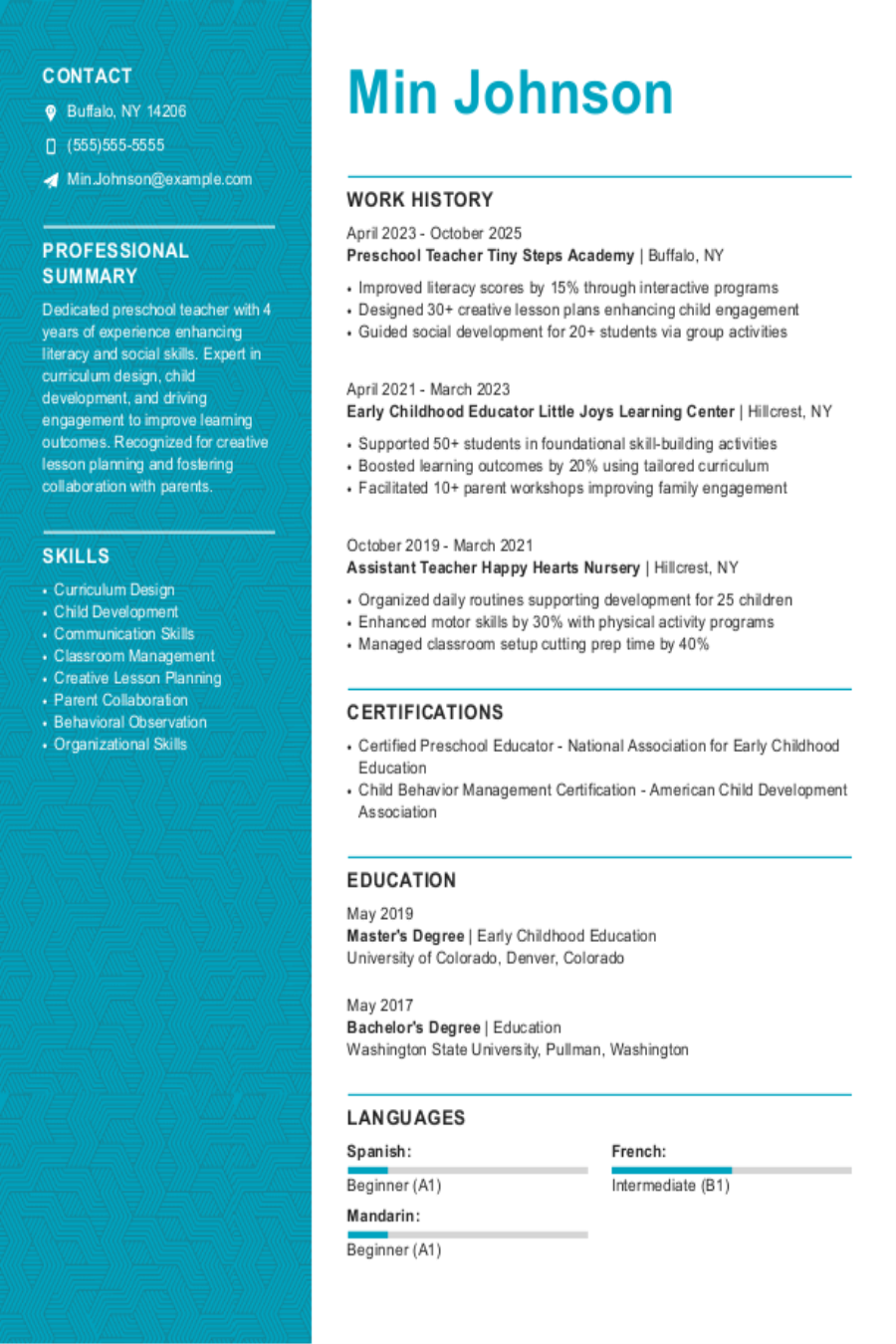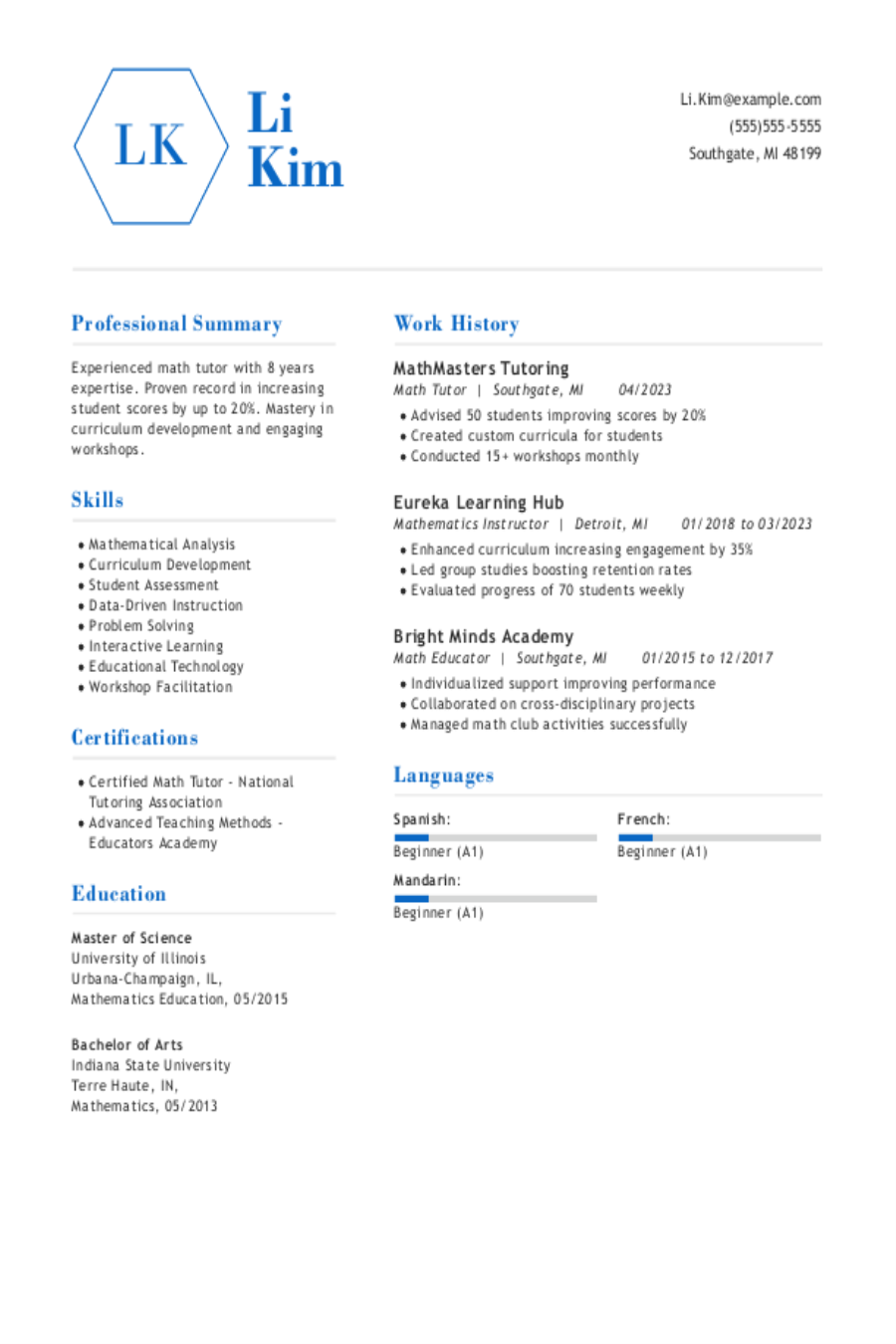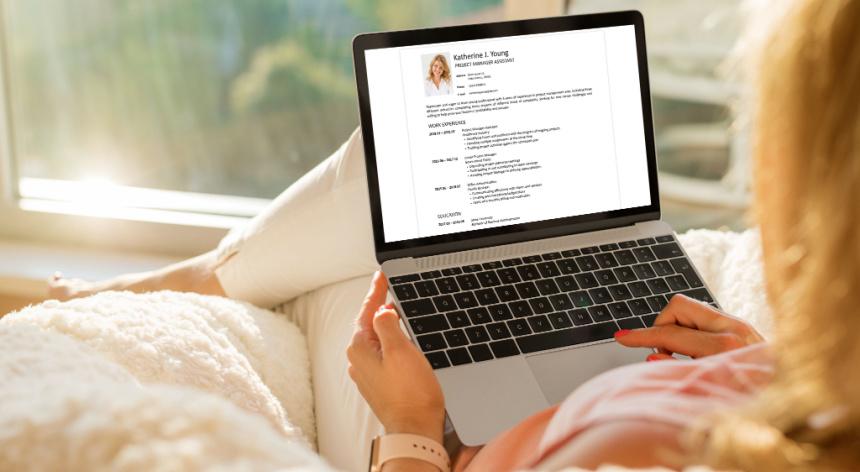A letter of intent is a document used to set your intentions for establishing a professional relationship. It's similar to a cover letter, with a few key differences. Our guide will walk you through how to write a letter of intent with an example, plus help you decide when to write a letter of intent vs a cover letter.
Our guide covers:
- What a letter of intent is
- When to write a letter of intent vs a cover letter
- How to write a letter of intent
- Example letter of intent for reference
Want to build a letter of intent in just minutes? Use our Cover Letter Generator to create a professional-looking letter of intent using one of our cover letter templates and content suggestions.
What Is a Letter of Intent?
A letter of intent is a document describing your intentions and expectations for establishing a professional relationship. Letters of intent can be used to:
- Apply for jobs that don't have job openings matching your qualifications.
- Apply to graduate school programs and grants.
- Establish business relationships for transactions like mergers or real estate purchases.
For the purposes of this article, we'll mostly focus on writing a letter of intent for a job, but don't worry! If you're thinking of writing a letter of intent for a business relationship or academic program, the process is similar. No matter the intended recipient, a letter of intent should focus on succinctly explaining your intentions and describing the value that you bring to the table.
So, how does a letter of intent work for a job? A lot like writing a cover letter, actually! A letter of intent for a job, like a cover letter, is a document introducing yourself to an employer and describing your relevant skills and capabilities. So, what is the difference between a letter of intent and a cover letter?
A cover letter is often sent in response to a job application and focuses on describing why you, as a candidate, match the needs of the role. In contrast, a letter of intent is more often sent to an employer as a way to get your foot in the door with an organization that interests you. When there isn't a job opening that perfectly matches your qualifications, you can send a letter of intent to state your general interest in the organization and the reasons why you feel like the organization appeals to you.
Writing a letter of intent for academic purposes is also very similar to writing a cover letter for a job. In fact, you can use a cover letter template for your letter of intent, whether you're applying to college or inquiring after a professional role that excites you.
When to Write a Letter of Intent vs a Cover Letter
If a cover letter and a letter of intent are almost the same thing in most situations, why would you write a letter of intent vs a cover letter?
- For an organization that excites you: As mentioned above, a letter of intent can act as an "elevator pitch" to help get your relationship started with an employer that interests you, much like a letter of interest. You may send a letter of intent to an employer regardless of whether the organization has an open role that fits your needs. The objective of such a letter is to establish a relationship with the organization.
- For a school that you're interested in attending: Depending on the academic organization or program, a letter of intent may be recommended or required alongside your application. Much like a letter of intent for a job, a letter of intent for school focuses on what interests you about the academic organization, what qualifications you bring to the table, and the outcomes you hope to achieve within the academic program.
How to Write a Letter of Intent
Now that you know whether a letter of intent is right for you, it's time to learn how to write an impressive letter of intent.
Writing a letter of intent is simple if you follow these basic steps:
Step #1
Choose the right template
Whether you write a letter of intent for grad school, for med school, or for a job, a neat and professional template is a must. Choose a stylish premade template or build one yourself. In either case, your letter should be organized and neat.
Step #2
Create a header with your name and contact information
Your letter should start with a header that includes your name and key contact details. Your phone number, email address, city and state, and your LinkedIn details should be displayed prominently at the top of your letter.
Step #3
Include the contact details of the department you're applying to
Whether it's an academic department or your dream company, your letter should include the contact information of the person you're trying to reach. The exception for an academic letter of intent is if the program you're applying to provides instructions for addressing your letter. If your target organization provides guidance for your letter's format, follow it!
Step #4
Address your letter
Begin your letter with "Dear [Department Head/Recruiter/Hiring Manager]". For a letter of intent, researching the organization and addressing your letter to the right person is a key step. If you can't find a name to address your letter, "Dear Hiring Manager" or a similar alternative works too.
Step #5
Open with an introduction
The introduction to your letter of intent should be concise and clear. Start with an opening that explains who you are and why you're reaching out. If you're writing a letter of intent for a job, your introduction should summarize your career and explain why you're interested in potentially working for the company. For an academic letter of intent, describe your academic background and discuss why the organization interests you. No matter the type of letter you write, keep this section brief; It should be no more than three sentences long.
Step #6
Write detailed body paragraphs
Next, it's time to write your body paragraphs. Your body paragraphs should describe what you have to offer the role using active language and numerical data that demonstrates your concrete achievements in your field. This is similar to the content of a cover letter, but don't forget to dedicate a few sentences to discussing some aspects of the organization or program that interest you. Noting specific efforts or projects from the organization that fit in with your career history will help demonstrate your genuine interest.
Step #7
End with a conclusion
Your conclusion should bring home your earlier points without rehashing any of your content. Instead, restate why you're interested in the organization and what you hope to contribute to it. Remind the organization that you're interested in establishing a relationship, whether by further correspondence or an interview. Finally, thank the reader for considering your letter.
Step #8
End with a signoff
End your letter with an appropriate signoff, followed by your signature. Something like "Warm regards" or "Sincerely" is an appropriate choice.
If you're sending a letter of intent to an organization that doesn't have any current job openings, don't be surprised if you don't receive an immediate response offering you an interview. Before you submit your letter, think about the realistic goals you hope to accomplish. Establishing a relationship with an organization that interests you is a valuable step, even if it doesn't immediately result in a job.
Example Letter of Intent
This example letter of intent brings together all of the parts we've discussed. Check out this sample to help get your own letter of intent started. If you'd like more examples for how to build a letter that impresses employers, check out some cover letter examples from professionals in your field.
Can I Use a Cover Letter Builder for a Letter of Intent?
In today's modern job search landscape, job applicants have a variety of tools at their disposal to simplify and streamline the writing process for career documents like resumes, cover letters, and letters of intent. From AI tools like ChatGPT to AI-powered services like resume and cover letter builders, digital tools are a staple for many job applicants. But can a cover letter builder help you create a letter of intent?
Of course! A professional cover letter builder should allow you to adjust your content as needed while providing a professional template that you can use to organize your letter. Whether you use AI to write your letter or you use a builder to access a stylish template, using the tools at your disposal will help you write a strong letter quickly.
Key Takeaways
A letter of intent focuses on why the organization excites you
Writing a letter of intent for potential employers or academic programs can help you introduce yourself to new opportunities. Your letter of intent is your chance to communicate why these organizations or programs interest you by describing your relevant skills and building connections between your qualifications and the organization.
A letter of intent is a lot like a cover letter
The basic sections of a letter of intent match pretty closely with the parts of a cover letter. If you know what a cover letter looks like, then you have a good foundation for starting a letter of intent. In fact, you can even use a cover letter template to write your letter of intent.
A letter of intent is used for a variety of purposes
While a letter of intent is very similar to a cover letter, they do have some key differences. Many academic institutions expect letters of intent along with applications to academic programs. You may also send a letter of intent to a potential employer if you're interested in introducing yourself to the organization or if there isn't currently an open role for you to apply to.
Write each section with care
From an introduction that gives the reader a sense of your qualifications and interests, to body paragraphs that quantify your achievements and focus on your potential contributions to the role, to a polite conclusion that suggests further correspondence, your letter should show the employer or institution that you are genuinely excited by the opportunity to contribute to their goals.
Resources to Help With Your Job Search
- How to Start a Cover Letter
- How to Write a Cover Letter for an Internal Position
- What Is the Purpose of a Cover Letter?
- Should I Use Bullet Points on a Cover Letter?
- Cover Letter Basics
- How Long Should a Cover Letter Be?
Was this information helpful? Let us know!
Hailey is a career advice writer dedicated to helping job seekers excel in their careers.
More resources

How to Include Networking Skills on a Resume (40+ Examples, Definition & Tips to Improve)
What are networking skills? We ll answer this and all your p...

RoboBossing: 66% of Workers Say AI in Leadership Would Make the Workplace More Fair and Efficient
Resume Now s latest report finds growing support for thoughtfu...

Preschool Teacher Resume: Examples, Templates & Tips
Check out our guide for help writing a job-winning preschool t...

Math Tutor Resume: Examples, Templates & Tips for 2025
Get inspired with our math tutor resume examples templates an...

Kindergarten Teacher Resume: Examples + Templates for 2025
Was this information helpful? Let us know &star &star &star &s...

